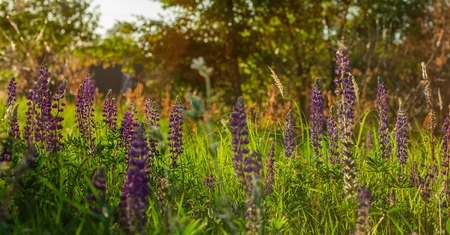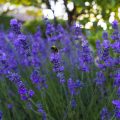1. Size and Capacity
When you’re shopping for a compost bin or tumbler for your backyard garden, one of the first things to consider is size and capacity. Choosing the right size is all about matching how much kitchen scraps and yard waste your household produces with the space you have available in your yard. If you pick a bin that’s too large, it could end up taking over your garden or just not look right in your outdoor space. On the other hand, if it’s too small, you might find yourself running out of room and unable to keep up with all your organic waste.
How Much Compost Do You Need?
Think about how many people are in your household and how often you cook at home. Families that cook daily will usually generate more food scraps than singles or couples who eat out more often. Also, if you regularly do yard work—like mowing the lawn or raking leaves—you’ll need extra space for that green and brown material.
Typical Compost Bin & Tumbler Sizes
| Size (Gallons) | Best For | Backyard Space Needed |
|---|---|---|
| 15-30 | Singles or couples Small gardens |
Minimal (fits on patios or small corners) |
| 30-80 | Small families Medium gardens |
Moderate (fits beside sheds or fences) |
| 80-120+ | Larger households Big yards or lots of yard waste |
Spacious areas (needs clear ground space) |
Quick Tips:
- If you only have a small patio or limited backyard space, look for compact tumblers or stackable bins.
- If you want to process grass clippings, fall leaves, and regular kitchen scraps, a larger bin may be worth it.
- Make sure there’s enough room around the bin for airflow and turning if needed.
Selecting the right size compost bin or tumbler ensures you can manage your organic waste easily while keeping your backyard tidy and functional.
2. Material and Durability
When choosing a compost bin or tumbler for your backyard garden, one of the most important things to consider is the material it’s made from. Since your compost system will sit outside in all kinds of weather—sun, rain, snow, and wind—it needs to be built tough enough to last through the seasons. In the U.S., climates can range from humid summers in Florida to snowy winters in Minnesota, so picking the right material really matters.
Popular Materials for Compost Bins and Tumblers
| Material | Pros | Cons |
|---|---|---|
| Recycled Plastic | Lightweight, affordable, resistant to rust and rot, eco-friendly | Can crack in extreme cold over time |
| Galvanized Steel | Very sturdy, long-lasting, good for all climates, resists rust when coated properly | Heavier to move, can get hot in full sun |
| Wood (like cedar or redwood) | Natural look, biodegradable, some types resist rot and insects | Needs more maintenance, can warp or rot if not treated well |
| Molded Resin/Polyethylene | Weatherproof, durable, easy to clean, often UV-protected | Usually more expensive than basic plastic models |
What to Look For in U.S. Climates
The best compost bins and tumblers are made from sturdy, weather-resistant materials. Recycled plastic is a top choice because it’s both durable and helps reduce waste. Galvanized steel is another solid pick if you want something that will last for years with minimal upkeep. Make sure the bin or tumbler has UV protection if you live somewhere with lots of sun—this helps prevent cracking or fading. If you prefer wood for its natural look, choose rot-resistant types like cedar and make sure they’re treated for outdoor use.
Quick Tips:
- If you live in a rainy area (like the Pacific Northwest), avoid untreated wood and look for rust-proof metal.
- If you’re in a place with harsh winters (like the Midwest), pick plastics rated for freezing temps or insulated options.
- If summer sun is strong where you live (like Arizona or Texas), check for UV-stabilized materials that won’t break down quickly.
Bottom Line:
Your compost bin or tumbler should be able to handle everything the American weather throws at it—so always check the label for details on durability and weather resistance before making your choice!

3. Ease of Use and Accessibility
When you’re picking out a compost bin or tumbler for your backyard garden, it’s important to choose one that won’t make composting feel like a chore. Look for a model that’s simple to load, turn, and empty—these features can make all the difference in your composting experience.
Key Features to Consider
| Feature | Why It Matters | What to Look For |
|---|---|---|
| Large Access Doors | Makes adding scraps and removing finished compost easier | Wide openings with secure latches |
| Ergonomic Handles | Simplifies turning or moving the bin, especially when full | Comfortable, non-slip grips positioned at good height |
| Axle-Based Tumbling Mechanism | Helps mix compost with less effort compared to manual bins | Sturdy axles and smooth rotation action |
| Height Off the Ground | Keeps pests out and makes unloading compost easier into wheelbarrows or buckets | Bins elevated on stands or legs |
| Easy Assembly | Saves time and frustration during setup | Clear instructions, minimal tools required, snap-together parts if possible |
User-Friendly Design Makes Composting Simple
If you’re new to composting, or just want to keep things hassle-free, pay attention to how easily you can open and close the bin, add kitchen scraps, and remove finished compost. Some tumblers have two chambers so you can fill one side while the other side “cooks.” This helps keep your routine smooth and steady.
Trouble-Free Turning and Mixing
A tumbler with an axle-based system usually turns more smoothly than basic models. Ergonomic handles also mean you won’t strain your back or hands trying to rotate a heavy load. These small details go a long way in making regular mixing—a key step in good compost—quick and painless.
The Bottom Line: Make It Easy On Yourself!
No matter what size your garden is, choosing a user-friendly compost bin or tumbler will help you stick with composting for the long haul. The easier it is to use, the more likely you’ll keep up with it—and enjoy healthy soil as a result.
4. Aeration and Odor Control
When choosing a compost bin or tumbler for your backyard garden, its important to pay attention to how well it manages airflow and odor. Good aeration helps break down organic material faster, while controlling odors keeps you on good terms with your neighbors—something that matters in American communities where yards are often close together.
Why Aeration Matters
Composting is all about turning food scraps and yard waste into rich soil, and that process depends on oxygen. Without enough air, composting slows down and can start to smell bad. Look for bins or tumblers with plenty of ventilation holes or built-in aeration systems. Tumblers are especially popular in the U.S. because they make it easy to mix the contents and introduce more air.
Odor Control Features
Keeping odors at bay is a top priority, especially if you live in a suburban neighborhood. Features like tight-fitting lids, charcoal filters, and secure latches help keep smells inside the bin. Some composters are designed with double walls or extra seals for even better odor control.
Comparing Aeration & Odor Control Features
| Feature | Description | Benefit for Backyard Use |
|---|---|---|
| Ventilation Holes | Openings on sides/lid/base for airflow | Speeds up decomposition, reduces bad smells |
| Tumbler Design | Rotating barrel for easy mixing | Evenly distributes oxygen throughout contents |
| Tight Lid & Seals | Keeps odors contained inside the bin | Makes backyard use neighbor-friendly |
| Charcoal Filter | Absorbs unpleasant odors as air escapes | Extra protection from strong compost smells |
Quick Tips:
- Select a bin or tumbler with effective ventilation to ensure good airflow.
- Aeration speeds up composting and helps prevent unpleasant odors.
- If you’re concerned about smell, look for models with charcoal filters or extra seals—especially useful in tightly packed neighborhoods.
- Tumblers are easier to turn, which means more oxygen and less odor trouble.
By focusing on aeration and odor control features, you’ll have a compost setup that works well in any American backyard without causing issues with neighbors or slowing down your gardening projects.
5. Pest and Critter Resistance
One of the biggest challenges backyard gardeners face with composting is keeping unwanted pests out of their bins or tumblers. In many American neighborhoods, animals like raccoons, squirrels, rats, and even opossums are quick to investigate anything that smells like food—even if it’s just scraps meant for compost. That’s why it’s important to prioritize compost bins and tumblers designed specifically to keep critters away from your compost pile.
Why Is Pest Resistance Important?
Pests can quickly turn your composting experience into a headache. Not only can they scatter your food scraps all over the yard, but they can also damage your bin and create an unsanitary mess. Some critters may even take up residence inside the bin if it’s not secure enough! Choosing a pest-resistant design helps protect your garden, keeps your compost process on track, and avoids attracting more wildlife than you’d like.
Features to Look For
| Feature | How It Helps |
|---|---|
| Locking Lids | Prevents raccoons and other clever animals from prying open the bin. |
| Tight-Sealing Doors | Keeps rodents and insects from squeezing in through gaps or cracks. |
| Sturdy Construction | Metal or heavy-duty plastic resists chewing, clawing, and gnawing. |
| Elevated Design (for Tumblers) | Makes it harder for ground-dwelling pests to reach the compost. |
| Small Ventilation Holes | Allows airflow but prevents small critters from entering. |
Pest-Resistant Materials Matter Too!
Bins made of thick plastic or metal are much harder for animals to chew through compared to thin plastic or wood. If you live in an area with lots of wildlife activity, investing in a heavier-duty model is worth every penny. Also, check for any parts that could loosen over time—like latches or hinges—and make sure they’re built to last.
Avoid Common Pitfalls
Some budget-friendly bins have simple lids that just rest on top, making them easy targets for determined raccoons or squirrels. Others may have ventilation holes that are too large, letting mice sneak right in. When shopping, always check reviews from other gardeners in your area; they often mention whether a product held up against local pests.


